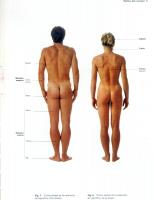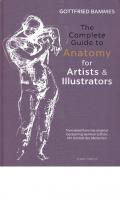Learning to See, Overview for Artists [1, 1 ed.]
Learn to see like an artist.
245 99 2MB
English Pages 10
Recommend Papers
![Learning to See, Overview for Artists [1, 1 ed.]](https://ebin.pub/img/200x200/learning-to-see-overview-for-artists-1-1nbsped.jpg)
- Author / Uploaded
- Gabriel Mark Lipper
File loading please wait...
Citation preview
LEARNING TO SEE Overview for Artists Gabriel Mark Lipper
Finding YOUR Artistic Voice! Thank you for downloading this artistic overview! I’m excited to have this opportunity to share some of the knowledge I’ve gleaned over the course of more than twenty years as a professional artist.
Art for me has always been about expression. Whether we use art to tell a visual story, or are simply reveling in the medium of paint itself, art is a powerful form of communication.
Following the artist’s path has been the most rewarding decision of my life. Having a solid understanding of how to see is the cornerstone of any artist’s success, and maintaining a daily creative practice is what makes that possible. Let’s transform our limitations into powerful attributes by exploring the fullness of what’s possible as fine artists. L EAR N I N G TO SEE
L EAR N I N G TO SEE
THE FORM BENEATH LIGHT AND SHADOW Form is the substance of things.
If we turn the
light off, the form remains. Focusing on the form of the subject, instead of how the light plays on the form, retains the solidity of your subject even as the light changes. With practice, you will discover the solid forms hidden in shadow shapes even when working from a photo reference.
O nce the structure of the subject is identified, we can begin to generalize the shadow and light. Separating the image into light and dark is a powerful way to clarify the design. Getting rid of the middle values initially helps us to simplify the shapes into larger masses. Creating a series of studies with structure, tone, and color is a fantastic tool for designing strong paintings.
L EA R N IN G T O S E E
L EA R N IN G T O S E E
BOLD COLOR IS TRANSFORMATIONAL The decision to become a painter was almost made for me. It was 1991 and I was in high school when I happened upon the painting “Portrait Of Matisse” by Andre Derain. It was color that made his images come alive and vibrate off the museum walls. This boldness and irreverence for the academic approach to painting fostered in me a new respect for the power of effective color.
I t was this same color and general disregard for tradition that caused one critic to dismiss the painters of this movement as “wild beasts”. The name stuck, and Fauvism was born. Almost a century later, the energy and daring embodied in the Fauvist work spoke directly to the rebellion of my youth.
My eyes were opened, and I hurled myself into a prolonged love affair with the Fauvists. I was hooked, and I was painting in bold color.
I hope you’ve enjoyed some of these concepts.
Art is all about pushing beyond our comfort zones, exploring the edges, and discovering what’s possible. With a strong foundation, your art can take you anywhere.
Join the conversation on: FACEBOOK
Gabriel Mark Lipper
INSTAGRAM
Paint your Passion.
BLOG





![Artistic Anatomy for Digital Artists [1, 1 ed.]](https://ebin.pub/img/200x200/artistic-anatomy-for-digital-artists-1-1nbsped.jpg)



